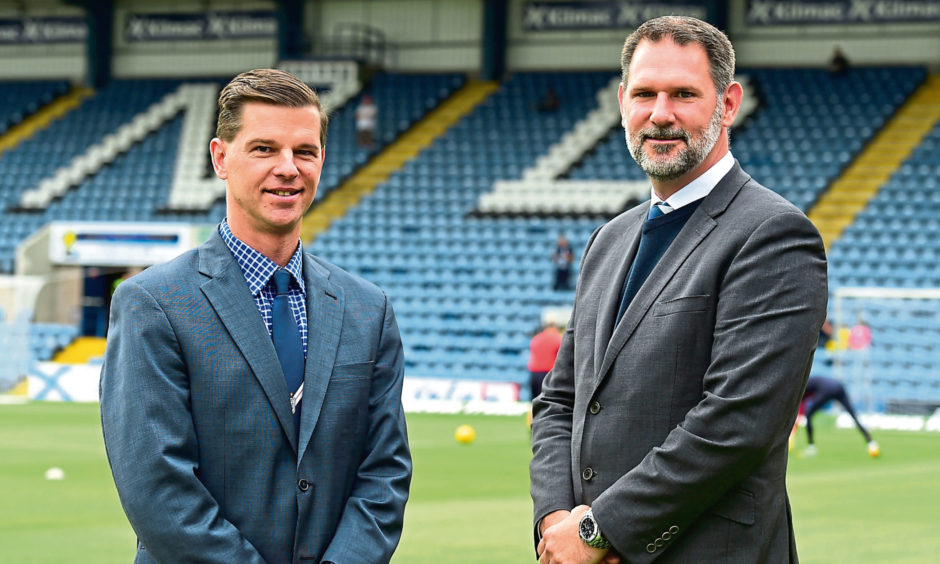
Two league titles, three promotions, two relegations and eight managers, with emotions ranging from elation through apathy to outright anger.
A decade at Dundee for Tim Keyes and John Nelms has seen plenty of ups and downs.
It was this week in 2013 that the Texan takeover of the city’s oldest professional football club was made official.
Ten years in charge, a lot of money spent.
Relations with the club’s fanbase has been frayed at times, at others things threatened to boil over, while some decisions at Dens have reverberated around the whole of Scottish football.
A certain spam folder was at the root of much of that, while the ongoing bid to build a new stadium remains forever ongoing.
But Dundee have been a top-flight club for six of those 10 years and will make it seven in 11 in the campaign to come.
Today Courier Sport takes a look back at a decade at Dundee for Keyes and Nelms.
On the pitch
The early seasons were encouraging, very encouraging.
Though there would be a first managerial casualty of the Keyes era in John Brown, promotion was assured on the final day of the season.
Paul Hartley led the club to the Championship title and there would be more success on the horizon.
Big backing in the transfer market ahead of the return to the top flight saw no fewer than 12 additions come in – among those were Greg Stewart, Paul McGowan, Scott Bain and Gary Harkins.
And the new look Dark Blues took to top flight football immediately, eventually earning a top six place.
That would be the club’s highest finish since 2001 – but it’s also a height they have not reached since.
Kane Hemmings arrived from Barnsley and knocked in 25 goals, earning a PFA Player of the Year nomination alongside team-mate Greg Stewart.
But too many draws saw the Dark Blues fall short of back-to-back top six finishes.
And from there, a decline to the status of relegation battlers began. Stewart was prised away by Birmingham City for a big fee and Hemmings went to Oxford amid confusion and anger over a buyout clause that was initially denied by Nelms.
Replacing that quality proved a major issue and eventually relegation came in 2019 as the Dark Blues became a yo-yo club, moving between the top two divisions.
Now they are back in the top flight and again backing their manager to keep them there.
Managerial stability
Tony Docherty is that man – the eighth manager in their decade in charge.
John Brown was at the helm 10 years ago but faith in his ability to get the club back to the top flight in 2013/14 ran out in the February of that year.
Paul Hartley was his replacement and his knowledge of a few gems in the lower leagues proved crucial for the next few years.
There would be stability under Hartley – he is the longest serving manager since the Americans came in.
Despite some real struggles in 2016/17 there was a reluctance to change until relegation really homed into view.
Other owners would have pulled the trigger earlier but patience with managers has been notable. Until recent years, that is.
Neil McCann and a short-lived spell under Jim McIntyre gave way to James McPake’s tenure which lasted almost three years.
Again he was given time to get things right, to get the club back to the top flight.
The former club captain was successful in that task, getting the Dark Blues up through the play-offs as the world came out of the coronavirus pandemic.
Manager merry-go-round
But that fabled stability for managers was shot to pieces in early February 2022.
Dundee had struggled all season but a huge win at Tynecastle had injected some hope into their ailing campaign.
That was backed up by a win at Peterhead in the Scottish Cup. The decision to then relieve McPake of his duties proved a major shock.
Nelms subsequently admitted the decision had been made prior to the Hearts game.
However, the transfer window was already shut, so incoming replacement Mark McGhee and assistant Simon Rusk would have no way to improve the squad already in place.
The dreadful timing and the manner in which the switch was handled destroyed any hope built up as performances on the pitch deteriorated and McGhee ended the campaign with the worst win ratio of any permanent Dundee boss in history.
So ended his stint in charge, with ex-Blackburn boss Gary Bowyer tasked with getting the club back up to the Premiership.
He did just that, winning the title on the final day of the Championship season.
But, in another prime example of bad timing, that would be his last match in charge – his departure was announced just one hour after he was named Championship Manager of the Year.
Rumours had been rife that Bowyer may leave, with a Nelms interview after the title win doing nothing to assuage the feeling change may be coming.
Now Docherty is in charge and financial backing is there ahead of a seventh season in the top flight under Keyes and Nelms.
Finances
Losses have been a regular feature of Dundee club accounts in the past decade.
It is to their massive credit that the Keyes family have continued to fund the running of the club and dip their hands into their pockets when needed.
Despite a brief period in the black post-pandemic, the club’s most recent accounts showed an £890,000 loss and a club statement said a further loss can be expected to be announced next year.
Since 2015/16 losses have topped £3.2 million.
Stadium
The Dundee owners see a fresh new stadium at Camperdown Park as a vital part of a successful future.
Early plans said the aim was for a spade in the ground in the summer of 2018 after the land was purchased by Football Partners Scotland back in 2015 for £1.2 million.
Now five years later there is still no sign of that. A public consultation took place last year but planning permission is yet to be submitted with issues over road access a stumbling block.
During that time the state of Dens Park has steadily declined due to lack investment, with the old stadium looking more and more tired.
The new project, even more so than results on the pitch, could define the FPS era at Dens – whether it gets built or not.
Ups
There have been notable highlights in the past decade – two Championship titles, three promotions and a top-six finish.
It’s a decent record, though fewer years in the second tier would be preferred.
A recent move to a new training facility at Gardyne Campus as part of a team-up with Dundee and Angus College has been a major step forward.
And bringing in ex-Scotland and Celtic boss Gordon Strachan as technical director was something of a coup, despite the resultant mis-step in appointing his old pal McGhee.
Downs
But it’s been far from smooth sailing across the 10 years – the SPFL vote saga saw Nelms cast as a villain across the country.
His move after Dundee’s deciding vote to end the season or not got stuck in the governing body’s spam folder had something Machiavellian about it.
It was designed to force through some sort of reconstruction of the Scottish league system. However, nothing would come of it other than animosity from the likes of Hearts and Partick Thistle after their relegations.
Relationships with club fans have often been uneasy as well with the lowest ebb coming shortly after McPake’s firing as poor decisions from the top had a clear impact on the pitch.
Those choppy waters have smoothed since, though communication from the top remains an issue.
While there are complaints over decisions made or the way things are run at times, not fulfilling a promise to have fan representation on the board a major one, the bottom line is commitment has been there from the start.
That commitment often gets questioned, particularly in light of further financial losses.
But the answer remains the same and the bills get paid, plans continue to get made for a better future at Dundee.
And if that future sees an established Premiership club playing in a shiny new stadium over the next few years then it could well be a bright one.
However, after 10 years there still remains a long way to go to realise that.
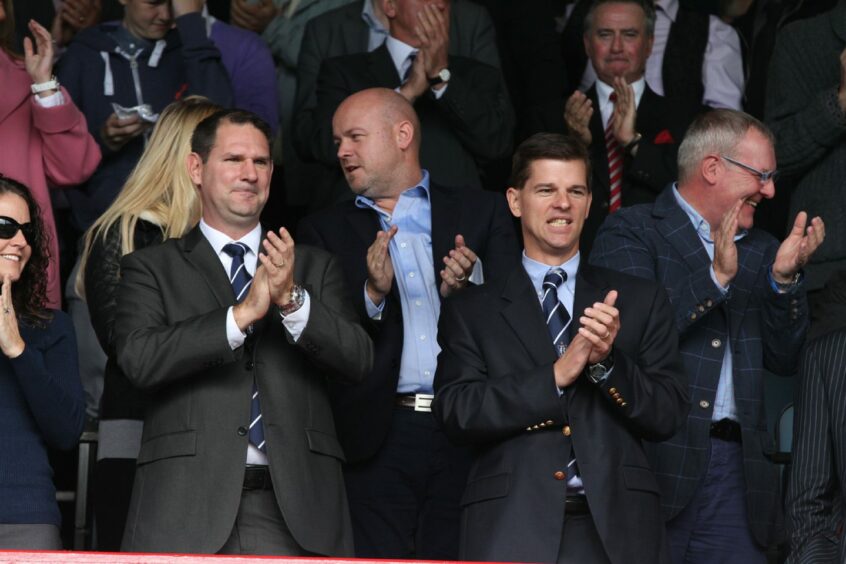
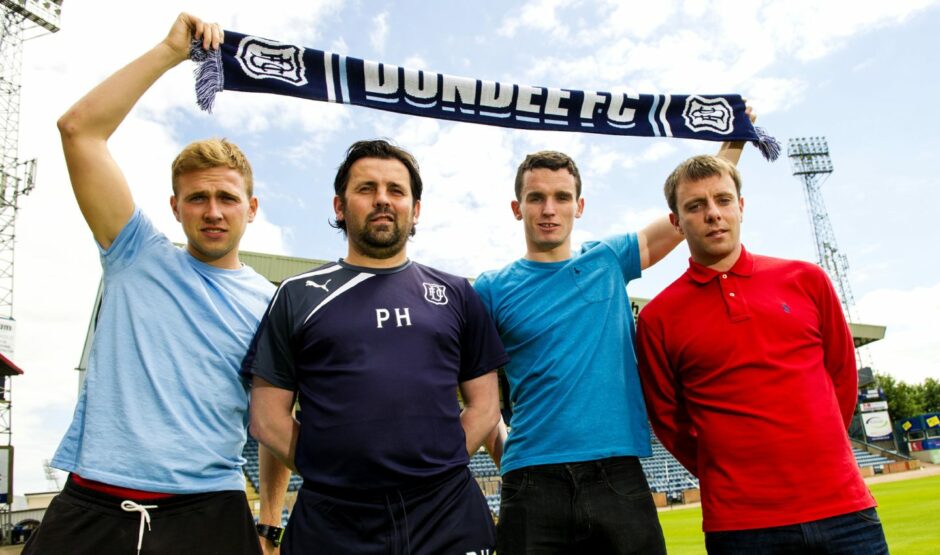
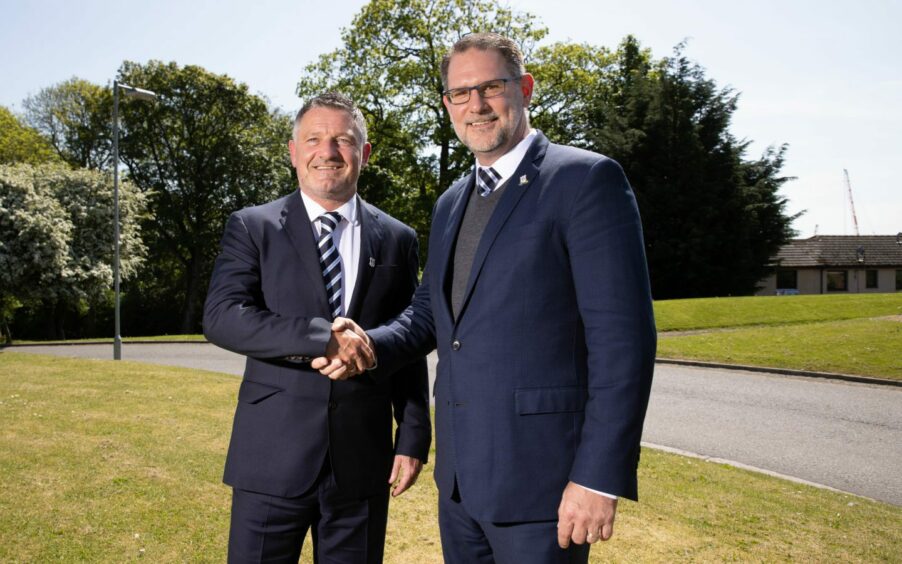
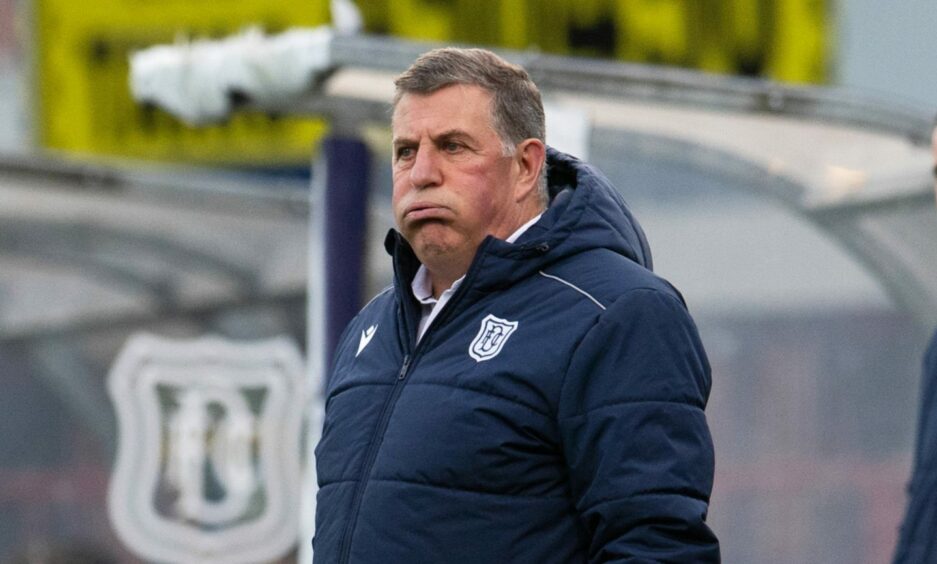
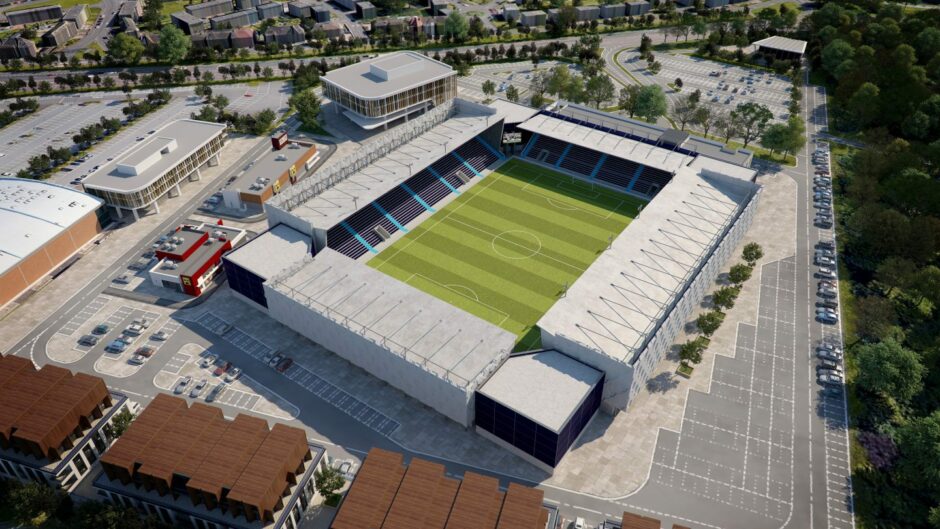
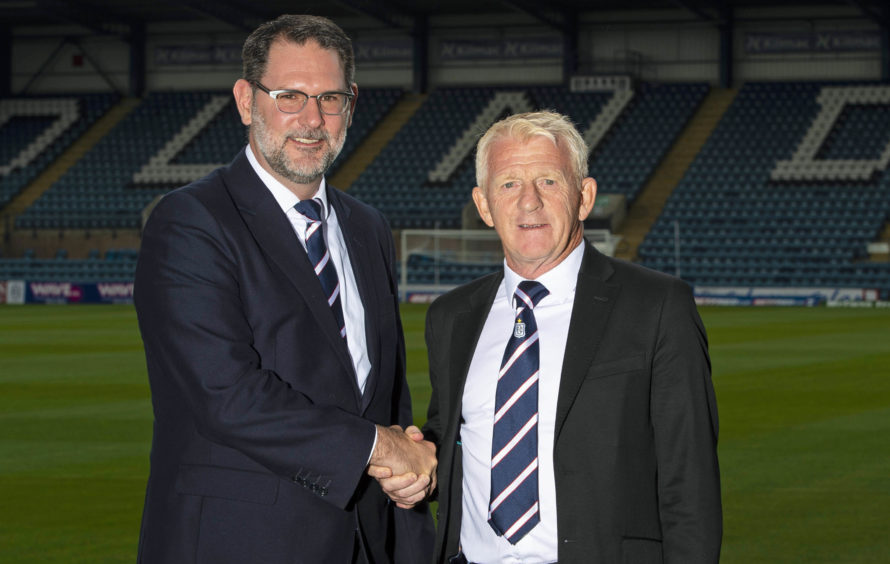
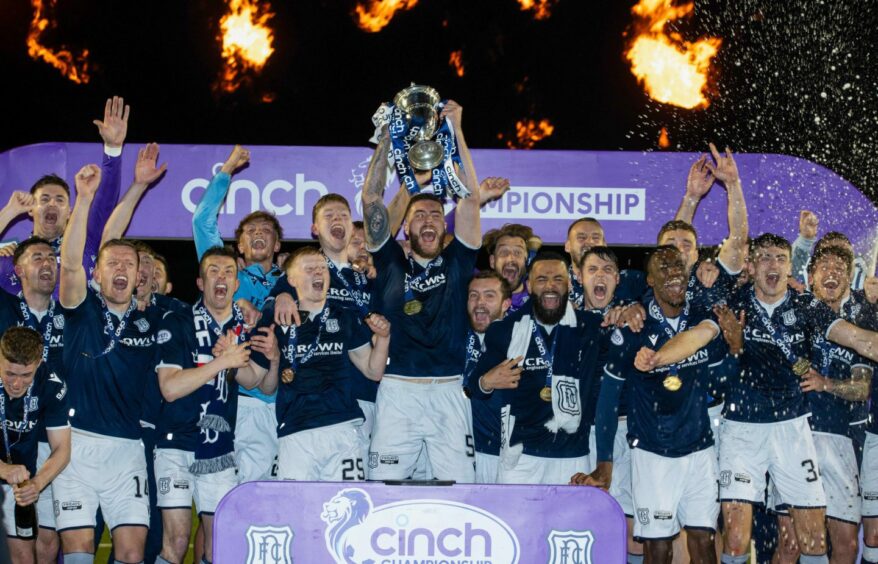

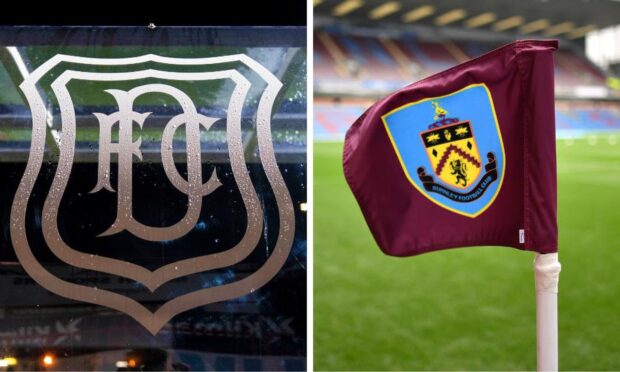



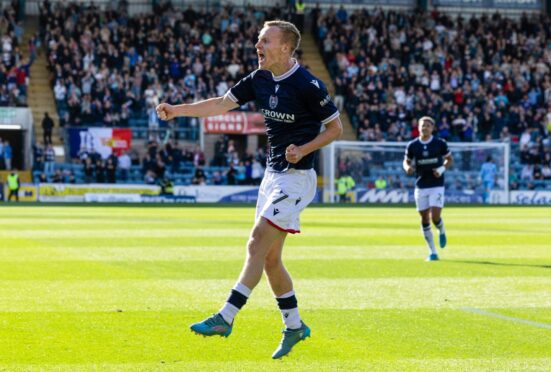


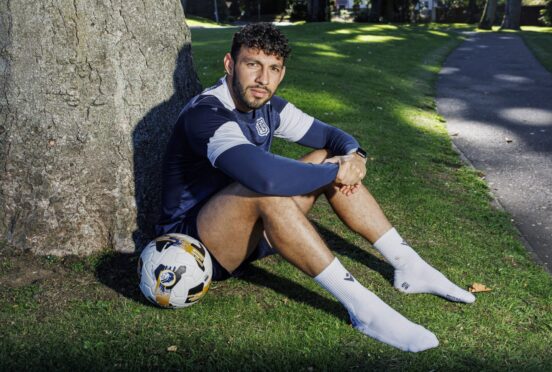

Conversation